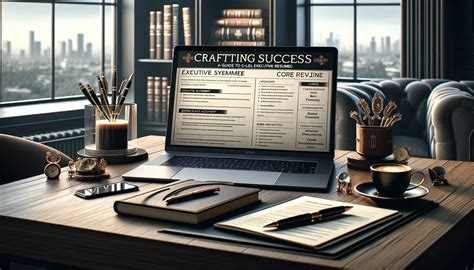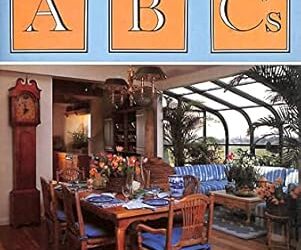Embark on a journey into the world of freelance interior design, where creativity meets functionality in captivating ways. From defining the role to managing finances, this guide covers essential aspects to help you thrive in this dynamic field.
 Delve deeper into the skills required, building a strong portfolio, finding clients, and balancing creativity with client preferences for a well-rounded understanding of what it takes to excel as a freelance interior designer.
Delve deeper into the skills required, building a strong portfolio, finding clients, and balancing creativity with client preferences for a well-rounded understanding of what it takes to excel as a freelance interior designer.
 Delve deeper into the skills required, building a strong portfolio, finding clients, and balancing creativity with client preferences for a well-rounded understanding of what it takes to excel as a freelance interior designer.
Delve deeper into the skills required, building a strong portfolio, finding clients, and balancing creativity with client preferences for a well-rounded understanding of what it takes to excel as a freelance interior designer.
Overview of Freelance Interior Designing
Freelance interior designers play a crucial role in transforming spaces into functional and aesthetically pleasing environments. They work independently, offering their expertise to clients seeking personalized design solutions.Role of a Freelance Interior Designer
Freelance interior designers are responsible for conceptualizing and executing design plans tailored to the client's needs and preferences. They collaborate closely with clients to understand their vision and create spaces that reflect their individual style.Benefits of Hiring a Freelance Interior Designer
- Personalized Approach: Freelance interior designers provide individualized attention to each client, ensuring that the design reflects their unique personality and lifestyle.
- Cost-Effective Solutions: By working independently, freelance designers can offer competitive pricing and flexible packages, making quality design services accessible to a wider range of clients.
- Creative Freedom: Clients have the opportunity to collaborate directly with the designer, allowing for greater creative input and customization throughout the design process.
- Attention to Detail: Freelance designers prioritize attention to detail, ensuring that every aspect of the design is carefully considered and executed to achieve a cohesive and harmonious result.
Typical Work Process of a Freelance Interior Designer
A freelance interior designer typically follows a structured process that includes:- Initial Consultation: Meeting with the client to discuss their requirements, budget, and design preferences.
- Concept Development: Creating mood boards, sketches, and 3D renderings to visualize the design concept.
- Design Execution: Sourcing materials, furniture, and decor items, as well as overseeing the implementation of the design plan.
- Final Presentation: Presenting the completed design to the client for feedback and making any necessary revisions before finalizing the project.
Skills Required
To succeed as a freelance interior designer, there are several essential skills that you need to possess. These skills will help you stand out in a competitive industry and deliver outstanding results for your clients.Design Skills
- Understanding of spatial arrangements and proportions
- Knowledge of color theory and coordination
- Ability to create aesthetically pleasing designs
- Familiarity with different interior design styles
Communication Skills
- Ability to listen to clients' needs and preferences
- Effective communication with clients, contractors, and vendors
- Strong presentation skills to convey ideas clearly
- Capability to negotiate and resolve conflicts
Technical Skills
- Proficiency in CAD software for creating designs and layouts
- Knowledge of 3D modeling software for visualizing designs
- Understanding of building codes and regulations
- Ability to work with different materials and finishes
Business Skills
- Project management skills to handle multiple clients and deadlines
- Budgeting and cost estimation capabilities
- Marketing and networking skills to attract new clients
- Contract negotiation and legal knowledge for client agreements
The Importance of Creativity and Attention to Detail
Creativity is at the core of interior design, allowing you to think outside the box and come up with innovative solutions for spaces. Attention to detail is crucial in ensuring that every aspect of a design is carefully considered and executed flawlessly. These qualities set you apart as a freelance interior designer and help you create unique and visually stunning spaces for your clients.Building a Portfolio
Having a strong portfolio is crucial for a freelance interior designer as it serves as a visual representation of their skills, creativity, and style to potential clients. It showcases past projects, design aesthetics, and the ability to transform spaces effectively.Significance of a Strong Portfolio
- Establishes credibility and professionalism in the eyes of clients.
- Acts as a marketing tool to attract new clients and projects.
- Demonstrates versatility, creativity, and design expertise.
- Helps in building a brand and a unique design identity.
Tips on Showcasing Diverse Projects
- Include a variety of projects such as residential, commercial, and hospitality designs to showcase versatility.
- Showcase before-and-after transformations to highlight the impact of your work.
- Add descriptions to each project, explaining the design process, challenges faced, and solutions implemented.
- Highlight any specializations or unique design elements that set you apart from other designers.
Examples of Successful Portfolio Layouts
Successful portfolio layouts often feature a clean and organized design that allows the projects to stand out. Here are a few examples:1. Grid Layout Organizing projects in a grid format with uniform image sizes for a cohesive look.
2. Storytelling Layout Presenting projects in a chronological order with descriptions to narrate the design journey.
3. Minimalist Layout Using a minimalist approach with ample white space to focus on the projects themselves.
Finding Clients
Finding clients as a freelance interior designer can be a challenging but rewarding task. Building a strong client base is essential for a successful freelance career in interior design. Here are some strategies to help you find and attract clients in the industry.Networking and Building Relationships
Networking is key in the interior design industry. Attend industry events, join professional organizations, and connect with other designers, architects, and potential clients. Building relationships with key players in the industry can lead to referrals and new projects.Importance of Referrals and Testimonials
Referrals and testimonials are powerful tools for securing new projects. Happy clients are likely to recommend your services to others, leading to a steady stream of work. Encourage satisfied clients to provide testimonials that you can showcase on your website or portfolio.Managing Finances
As a freelance interior designer, managing your finances is crucial to the success of your business. This includes setting rates, budgeting for projects, invoicing clients, and tracking expenses effectively.Setting Rates and Pricing Structures
- Research industry standards and market rates to determine competitive pricing for your services.
- Consider your level of experience, expertise, and the value you provide to clients when setting your rates.
- Offer different pricing structures such as hourly rates, flat fees, or package deals to cater to different client needs.
Budgeting and Financial Planning for Projects
- Create a detailed budget for each project, outlining all expenses including materials, labor, and other costs.
- Factor in your own time and overhead costs to ensure you are pricing your services correctly.
- Allocate funds for unexpected expenses or changes in the project scope to avoid financial setbacks.
Invoicing, Tracking Expenses, and Managing Cash Flow
- Send invoices promptly after completing milestones or projects to ensure timely payment from clients.
- Track all expenses related to your business, including materials, tools, software, and marketing efforts.
- Use accounting software or tools to manage cash flow, track income and expenses, and generate financial reports for better decision-making.
Balancing Creativity and Client Preferences
When working as a freelance interior designer, it is essential to find a balance between your own creative vision and the preferences of your clients. This delicate balance ensures that the final design not only reflects your unique style but also meets the needs and expectations of the client.Importance of Effective Communication
Effective communication is key in understanding and meeting client expectations. By actively listening to your clients and asking the right questions, you can gain valuable insights into their preferences, lifestyle, and budget. This allows you to tailor your creative ideas to align with their vision, creating a design that resonates with them.Navigating Disagreements with Clients
- Remain professional: It is important to stay calm and composed during disagreements with clients. Remember that they are entrusting you with their space, and professionalism is key in resolving conflicts.
- Seek compromise: Try to find a middle ground that satisfies both your creative instincts and the client's needs. This may involve making small adjustments or presenting alternative solutions that address their concerns.
- Explain your rationale: Clearly communicate the reasons behind your design choices to the client. By providing sound explanations, you can help them understand your perspective and build trust in your expertise.
- Focus on the end goal: Keep the ultimate goal of creating a beautiful and functional space in mind. By maintaining a client-centered approach, you can work together towards a design that everyone is happy with.












